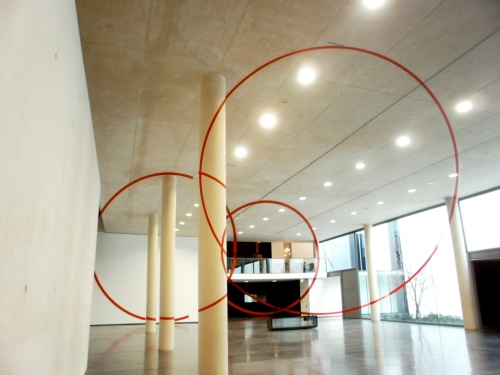 Princess X (right), Constantin Brancusi, 1916 – photo thanks to Geishaboy500
Princess X (right), Constantin Brancusi, 1916 – photo thanks to Geishaboy500
Paris is a weird city because although it’s generally very noisy due to tourists and traffic you can still manage to find a corner of tranquility if you know where to look. Despite being next-door to the Centre Pompidou the Atelier Brancusi feels like it’s in a small country village. Inside, all I could hear were chirping birds and a busker’s mandolin.
It is not the original location of Constantin Brancusi’s studios. They used to be based in the 15th arrondissement of the city until the building deteriorated and the contents were moved to outside the front of the Centre Pompidou. Then, when it became clear that the sculptures wouldn’t survive against the elements the decision was made to finally give them a home.
Although Brancusi was originally from Romania he decided to leave the contents of his studios to the people of France because his homeland’s communist government had shunned him. He gave the collection to France on the condition that it was displayed exactly as he’d left it on the day of his death.
Brancusi moved to Paris in his twenties to study at the prestigious École des Beaux-Arts. He later worked in Rodin’s workshop but left after two months as he felt he needed to find his own direction. Examples of his two most famous sculptures The Kiss, 1908 and Bird in Space, 1919 can be seen in the collection, but my favourite piece was Princess X, simply because it made me smile. Brancusi obviously had a sense of humour.
The sculpture was originally exhibited at the Salon des Indépendants (a regular exhibition organised for artists not supported by France’s official academy for painting and sculpture) in 1920 but was quickly replaced after complaints that it was pornographic. The title, ‘Princess X’ refers to Princess Marie Bonaparte, a direct descendant of Napoleon Bonaparte. She was a psychoanalyst and a close friend of Sigmund Freud, her most famous research was based on women’s ability to have an orgasm, hence the sexual form of Brancusi’s sculpture.
Brancusi was successful in his lifetime and expanded his studios several times. Yet despite his prosperity Brancusi continued to dress like a Romanian peasant. His roots were important to him, he was part of a community of Romanian intellectuals in Paris, influenced by Romanian folk stories and mythology and often entertained his guests by playing them traditional songs on his violin or cooking them recipes handed down the generations. The circle of friends that got to enjoy these treats included Picasso, Duchamp and Man Ray.
Brancusi died in 1957 at the age of 81 and was buried in Paris’ Montparnasse Cemetery, a sculpture of ‘Le Baiser’ or ‘The Kiss’ marks his grave.









